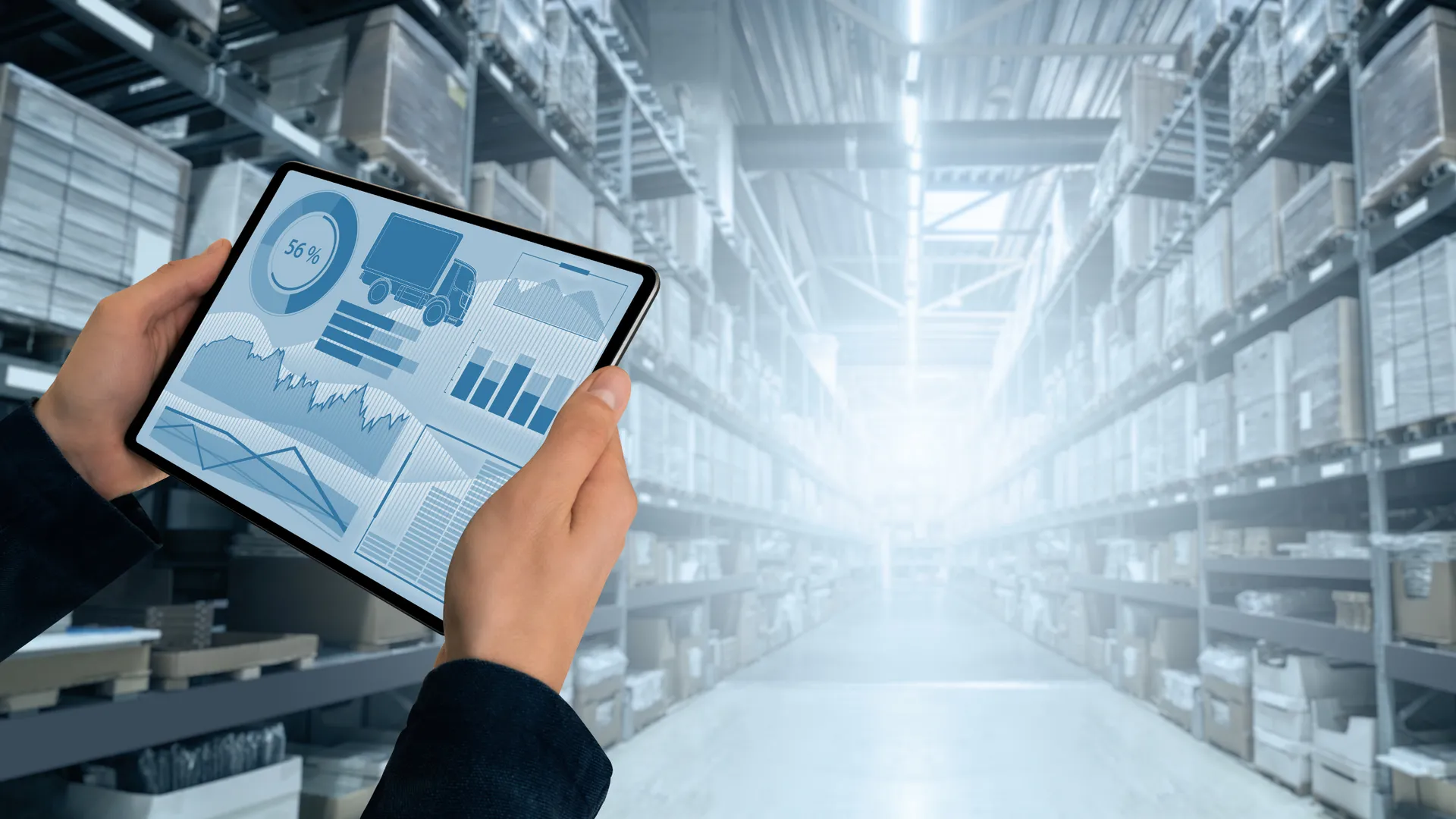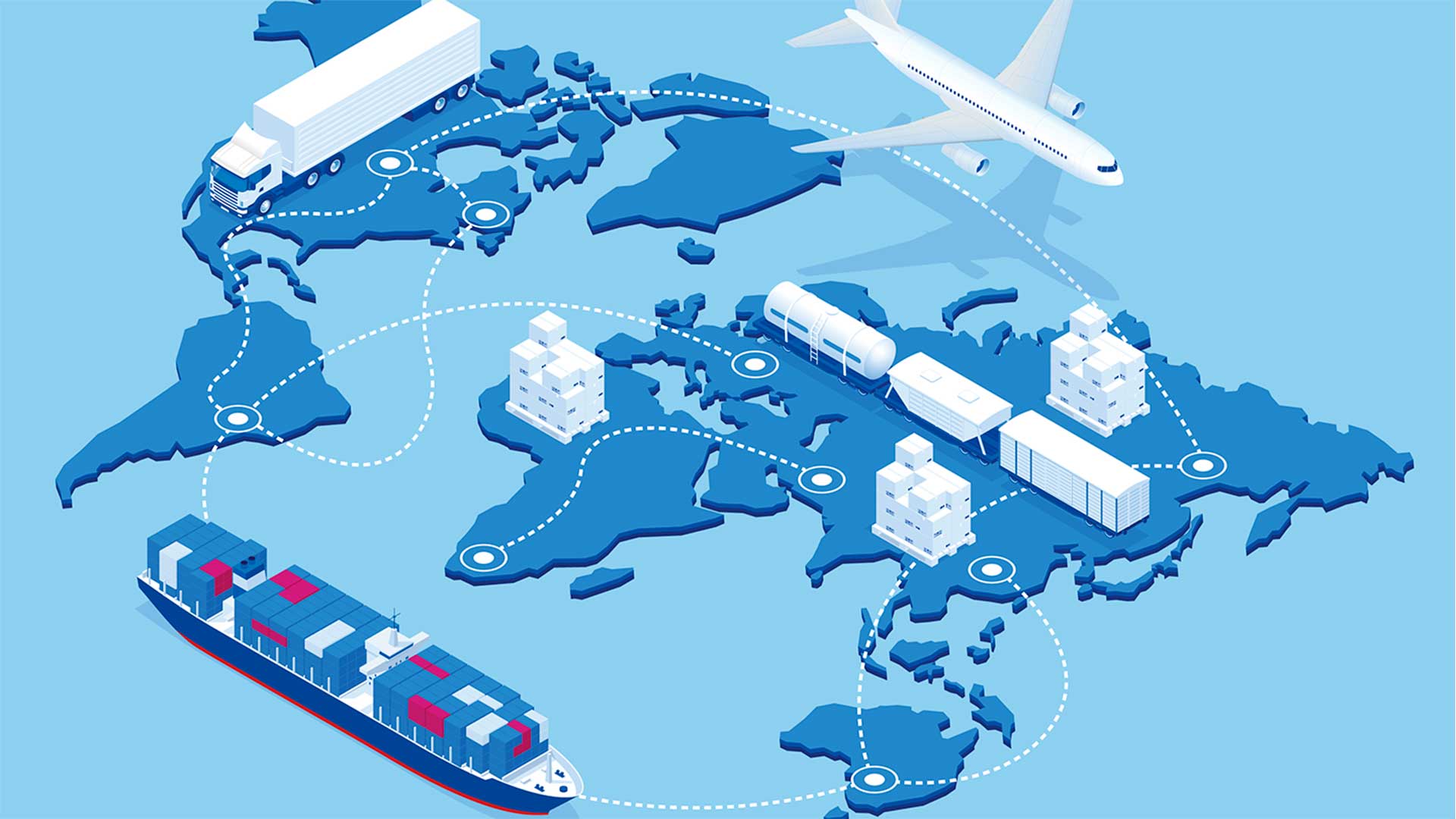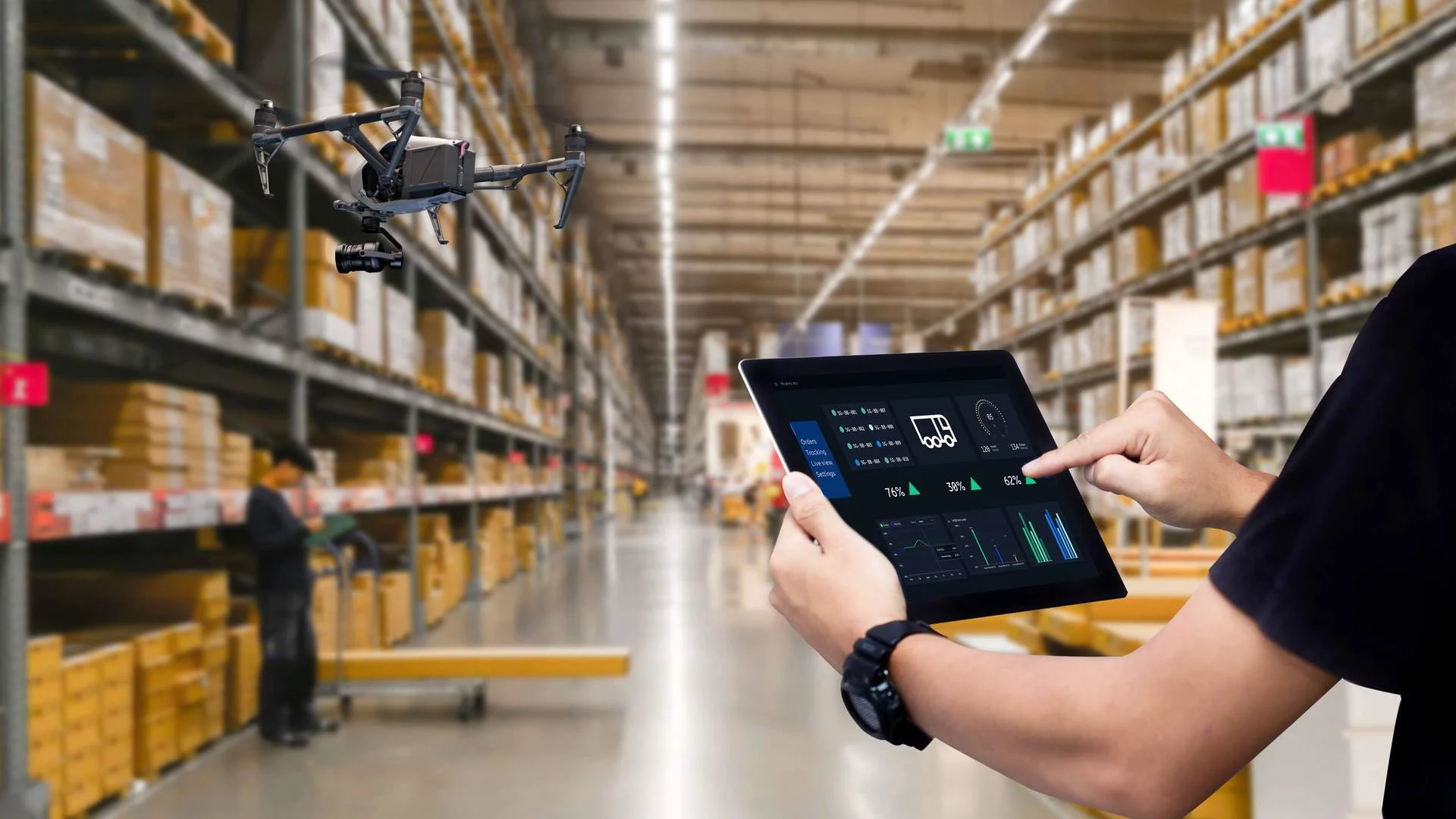Discover How Big Data Is Transforming Supply Chains with Efficiency, Prediction, and Smart Decision-Making. Real Applications in Argentina and Key Trends.
What Is Big Data Applied to Logistics?
Big Data in logistics refers to the ability to capture, process, and analyze massive volumes of data from multiple sources within the supply chain. It goes beyond mere data storage by extracting valuable insights from both structured and unstructured information.
In the logistics sector, it encompasses diverse information: goods movement, transit times, consumer behavior, weather conditions, traffic status, and market fluctuations. The integration and simultaneous analysis of this heterogeneous data enable the identification of patterns and opportunities that transform traditional logistics management.
What makes Big Data distinctive is its capacity to process these enormous volumes in real-time, allowing for dynamic adjustments and proactive decision-making—shifting from reactive operations to predictive systems.
Why Is It Important in Modern Supply Chains?
Operational Efficiency Improvement
Big Data optimizes every link in the logistics chain through detailed analysis. Companies implementing these solutions experience significant improvements, from warehouse management to route planning.
Advanced analytics uncover inefficiencies invisible to traditional systems: suboptimal patterns, underutilized resources, or redundant processes. Continuous analysis allows for real-time adjustments, reducing operational costs by 15% to 30%.
For instance, route optimization based on historical data combined with real-time traffic information significantly cuts delivery times and fuel consumption.
Data-Driven Decision Making
Big Data transforms decision-making by replacing intuition with precise analysis. This paradigm shift allows for more informed decisions, risk reduction, and maximized outcomes.
Analytical dashboards and visualization tools deliver critical information instantly. Algorithms can simultaneously process hundreds of variables to recommend the best option in complex situations.
This data-driven approach improves decision quality and reduces the time needed to make them—a crucial factor in a sector where operational agility is a competitive advantage.
Greater Forecasting and Planning Capabilities
One of the most transformative benefits is predictive capability. By analyzing historical trends and correlating multiple variables, organizations can anticipate demand changes, foresee incidents, and plan future scenarios with accuracy.
Predictive models allow companies to forecast seasonal demand peaks, estimate delivery times considering external factors, or predict maintenance needs. This foresight optimizes resources, reduces inventory costs, and improves customer service.
Organizations with predictive capabilities report up to a 20% reduction in inventory levels while maintaining or improving responsiveness.
Real-World Applications of Big Data in Logistics
Examples in Retail, Agribusiness, and Manufacturing
Big Data’s impact is evident across multiple sectors, adapting to each industry’s specific needs.
In retail, chains like Walmart have revolutionized operations using analytics systems that process sales, inventory, consumption, and external data to optimize distribution. In Argentina, Grupo Arcor uses Big Data to optimize its complex distribution chains by analyzing regional consumption patterns and logistics data.
In agribusiness, Big Data transforms the entire value chain. Grain processors use predictive analytics to anticipate harvests and plan capacity. Satellite data, combined with historical records and soil analysis, enables accurate production volume estimates.
In manufacturing, industrial plants implement predictive maintenance systems based on IoT sensor data, reducing downtime and optimizing internal logistics flows.
Most Used Platforms and Tools in Argentina
Argentina’s tech ecosystem has significantly developed Big Data solutions for logistics, combining local development with adapted international platforms.
SAP Supply Chain Management stands out, used by YPF Logística and Andreani to manage complex operations with advanced analytics. Microsoft Azure solutions have gained ground in manufacturing and retail for their scalability and flexibility.
The open-source ecosystem (Apache Hadoop, Spark, Tableau) is widely adopted among mid-sized operators and startups. Argentina’s tech community has developed local market-specific adaptations.
Companies like Tango Logística have incorporated advanced analytics capabilities into their platforms, offering solutions tailored to local SMEs.
Technologies Enhancing Big Data Usage
Internet of Things (IoT)
IoT has revolutionized real-time data capture and transmission through interconnected smart sensors monitoring every physical aspect: goods location and status, environmental conditions, or equipment performance.
In Argentina, these devices are essential for long-distance logistics management. GPS sensors combined with telemetry provide continuous information on location, temperature, driving patterns, and fuel consumption.
In warehouses, RFID sensors and beacons enable precise tracking and optimization of internal flows, generating heat maps of movements and identifying bottlenecks.
IoT’s revolution lies in its ability to generate continuous data streams that were previously invisible, turning every element into an information source for analysis and optimization.
Artificial Intelligence and Machine Learning
AI and machine learning represent the qualitative leap that transforms vast data volumes into actionable insights—identifying complex patterns, making accurate predictions, and generating optimized recommendations.
In Argentine logistics, these algorithms transform demand planning, route optimization, and inventory management. Mercado Libre uses predictive algorithms to anticipate order volumes and optimize distribution. Cruz del Sur uses AI to dynamically optimize routes based on multiple variables.
The transformative power lies in continuous learning: systems improve with each operation, adapting to new patterns.
Blockchain and Data Traceability
Blockchain technology is emerging as a solution for logistics data traceability and security. Its decentralized architecture guarantees data integrity throughout the chain—a critical factor in industries like pharmaceuticals and food.
In Argentina, sectors like wine and meat exports adopt blockchain to ensure full traceability, immutably recording every stage of the logistics process.
Integrating blockchain with Big Data multiplies value: while blockchain ensures authenticity and immutability, analytics tools extract valuable insights, creating a trustworthy data ecosystem to support critical decisions.
What Are the Challenges in Implementing Big Data in Logistics?
System and Data Source Integration
A major challenge is the effective integration of multiple legacy systems and disparate sources. Technological fragmentation is common: ERP, WMS, TMS, and departmental apps often operate in silos with limited interoperability.
This fragmentation hinders the creation of a real-time unified view. Integration projects require specialized resources and significant investments. The challenge intensifies when incorporating external sources like weather or traffic data.
Successful organizations address this with service-oriented architectures or data lakes that store both structured and unstructured information.
Cybersecurity and Data Protection
Big Data implementation involves handling sensitive and valuable information. Data about routes, inventories, customers, or pricing are critical assets, and exposure could have serious consequences.
In Argentina, where cyberattacks have significantly increased, protecting these assets is a top priority. Threats include both external and internal attacks—compounded when data must be shared with logistics partners.
Effective strategies include “Zero Trust” security models, anonymization and tokenization systems, and role-based access controls. Ongoing staff training and a security culture are fundamental.
Training and Resistance to Change
The shift to data-driven logistics represents a deep cultural transformation. Resistance to change and lack of analytical skills are major barriers.
In Argentina’s logistics sector—traditionally reliant on practical experience—the move to algorithm-based decisions may generate resistance from experienced professionals, often in the form of skepticism or reluctance.
The digital skills gap is another challenge. There’s a shortage of professionals combining logistics expertise with advanced analytics skills.
Successful initiatives tackle this with structured change management programs, tailored training, transparent communication, and mixed teams of logistics and analytics specialists.
Are We Heading Toward Predictive and Smart Logistics?
Digital Twins and Logistics Simulations
The digital twin concept is revolutionizing planning by creating accurate virtual replicas of entire physical systems, enabling visualization, simulation, and optimization in a virtual environment.
In Argentina, pioneering companies are developing digital twins of distribution centers and transport networks. These models, continuously fed with real data from IoT sensors, allow experimentation with different configurations without impacting ongoing operations.
Operators like Andreani use digital twins to assess new warehouse setups. In urban areas, simulations help optimize last-mile delivery in congested cities.
Their transformative potential lies in the ability to integrate multiple variables and create detailed “what-if” scenarios previously unimaginable.
Autonomous Logistics and Prescriptive Analytics
The natural evolution of Big Data leads to increasingly autonomous systems—capable not only of analyzing and predicting but also of making and executing decisions with minimal human intervention.
Prescriptive analytics, which recommends specific actions to optimize outcomes, is gaining ground in complex operations. Advanced systems can automatically suggest route adjustments, reallocate resources, or modify priorities based on changing conditions.
In Argentina, companies like Mercado Libre are at the forefront of autonomous system implementation. Algorithms continuously manage order assignment, optimizing routes in real-time based on traffic conditions and delivery windows.
The future points to integration with emerging technologies like advanced robotics and autonomous vehicles. This isn’t about replacing human intervention but evolving toward a collaborative model where autonomous systems handle routine tasks and professionals focus on strategic aspects.
Conclusion
Big Data is deeply transforming supply chains, turning traditionally reactive operations into predictive and intelligent systems. This change is not just technological but a fundamental shift in how we conceive and manage the flow of goods.
Leading organizations understand that the value doesn’t lie in accumulating data but in converting it into actionable insights that drive smarter decisions, more efficient processes, and better customer experiences.
As IoT, AI, and blockchain mature and converge, we foresee increasingly predictive, autonomous, and adaptive logistics. This evolution brings challenges, but the opportunities to improve efficiency, reduce costs, and enhance sustainability justify the transformation efforts.
Big Data is redefining what’s possible in modern logistics, enabling previously unimaginable levels of optimization and synchronization. Argentine companies embracing this transformation are not only improving current operations but preparing for a future where logistics excellence is inseparable from analytical excellence.



